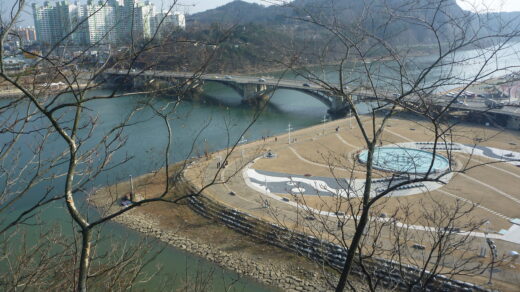This tip is based on a reader question about the following graphic in last month's message.

The reader asked why there isn't a space before or after the parentheses… Good question!
The answer may surprise you, but no, there should not be spaces there. The reason is hard to explain clearly without getting into complicated grammar, but the basic idea is that Korean is made up of character units functioning as standalone words, and also of character tags/markers attached to standalone words to indicate various grammatical meanings (such as subject, object, etc.).
In the case above, without the words in parenthesis, the phrase would read "Study Hard" Campaign은, where 은 is a topic marker attached to the word Campaign. Therefore, the added parenthetical text is stuck right in between the word and its tag and no space is added on either side.
Keep in mind that spaces should be added around parentheses when additional text is not being stuffed between a word and its tag. This phenomenon seems to occur almost exclusively when English and/or numbers are inserted into Korean text. The spacing around parenthesis within pure Korean text generally follows the same rules as we use in English (though Koreans get used to such usage and often go without spacing even when it should be there).
Korean Translation Tip – Correct spacing in Korean around parentheses often looks funky and inconsistent to English speakers. Feel free to bug your linguist for confirmation, but expect to get a response back saying it’s OK.



